What to do if the fluid nozzle on my Graco Sharpe Finex FX3000 Paint Sprayer is too loose?
- GGary MooreSep 2, 2025
If the fluid nozzle on your Graco Paint Sprayer is too loose, tighten it.

What to do if the fluid nozzle on my Graco Sharpe Finex FX3000 Paint Sprayer is too loose?
If the fluid nozzle on your Graco Paint Sprayer is too loose, tighten it.
What to do if my Graco Paint Sprayer cup is almost empty?
If the cup of your Graco Paint Sprayer is almost empty, fill it.
What to do if my Graco Sharpe Finex FX3000 cup is empty?
If the cup of your Graco Paint Sprayer is empty, fill it.
What to do if my Graco Sharpe Finex FX3000's fluid is too thick?
If the fluid you're using with your Graco Paint Sprayer is too thick for gravity feed, thin the material.
What to do if my Graco Sharpe Finex FX3000's atomization air pressure is too high?
If the atomization air pressure is set too high on your Graco Paint Sprayer, reduce the air pressure.
What to do if the needle on my Graco Sharpe Finex FX3000 feels sluggish?
If the needle on your Graco Paint Sprayer feels sluggish, you should clean and lubricate it.
Why is my Graco Sharpe Finex FX3000 producing a thick, dimpled finish?
A thick, dimpled finish (resembling orange peel) from your Graco Paint Sprayer is caused by holding the gun too close to the surface. Hold the gun about 6-8 inches (150-200 mm) from the surface.
| Type | HVLP |
|---|---|
| Weight | 1.2 lbs (0.54 kg) |
| Fluid Delivery | Gravity Feed |
| Air Inlet Size | 1/4 inch |
| Material | Aluminum |
| Operating Pressure | 29 PSI |
| Tip Size | 0.015 - 0.021 inches |
| Fluid Nozzle Size | 1.4mm (depending on model) |
Hazards related to flammable fumes and ignition sources in the work area.
Risks associated with improper operation, maintenance, or modification of the equipment.
Dangers from fluid splashes or component failure due to pressure.
Warnings about hazardous fluids and fumes that can cause serious injury or death.
Essential protective equipment for safe operation, servicing, or presence in the operating area.
Steps to safely relieve pressure in the gun before cleaning or servicing.
Instructions on how to adjust the spray pattern using adjustment knobs.
Techniques for optimal paint application, including gun distance and stroke.
Steps for flushing the gun before color changes, storage, or repairs.
Routine cleaning instructions for maintaining equipment performance and longevity.
Initial steps required before performing maintenance or repairs on the equipment.
Procedures for disassembling and servicing the air cap, nozzle, and needle.
Instructions for servicing the air valve and needle packing components.
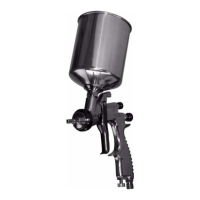


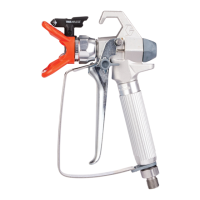

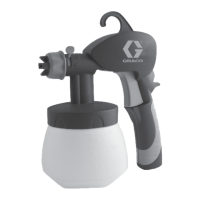
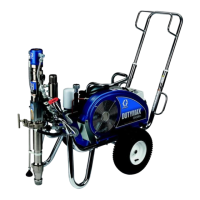
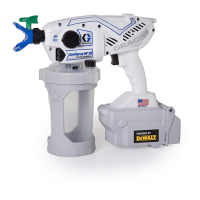
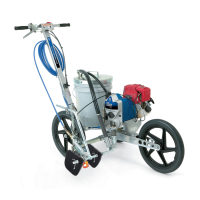

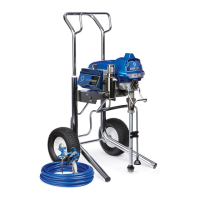

